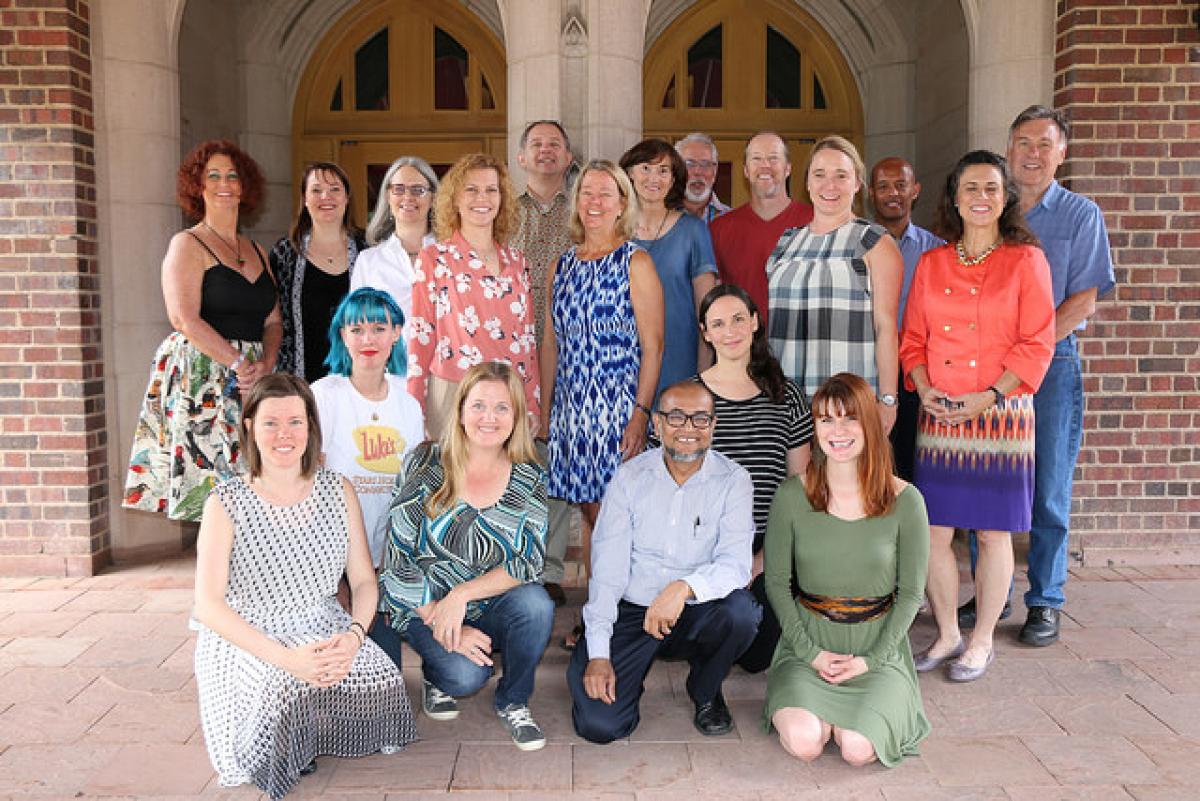DU Faculty Receive Lesson in Course Design

For faculty members, designing a new course is easy, right? Just a pick a textbook, write up a syllabus that follows the chapters, and call it a day.
Not so fast, says Virginia Pitts, director of university teaching with DU’s Office of Teaching and Learning (OTL). If you want students to really get something out of a class — and if you want to measure just how effective that learning is — you need to think intentionally about outcomes even before you even start to think about a syllabus. That’s why this summer, the OTL offered two weeklong Course Design Institutes for DU faculty members.
“Something a lot of the participants talked about as something wonderful they got out of this was the space and time and support to step back and think about what really matters to them,” Pitts says. “What do they feel has been working and not working, and how can they reshape their course to meet the goals that they come in with? That space matters a lot. And the time matters a lot to faculty members.”
In a blog post on the sessions, Pitts wrote that “participants started out by articulating their ‘big dream’ for their course, reflecting on questions such as, ‘What is the primary impact you want your course to have on students’ lives?’ and, ‘Five years after this course is over, what do I hope my students will still carry with them? Throughout the week, they engaged in a series of interactive workshops and discussions and collaborative and individual work as they designed or redesigned their courses to achieve that big dream, using research-based perspectives on how learning works.”
Among the principles participants explored were significant learning — guiding students to understand why what they’re learning is important and how to relate it to other subjects — and how to measure success, as well as the metaphor of “focusing on big rocks first.”
“Imagine you have an empty jar, and you’ve got to fill it with a bunch of rocks and sand. If you start with the sand, and then put the tiny rocks in, and try to squeeze the big rocks in at the end,” they often don’t fit, she explains. “Imagine that the big rocks are those really important things you want people to learn, like critical thinking, or learning how to collaborate with others,” Pitts says. “Often those big rocks end up being an add-on. We don’t design around them; we design around the sand: the details of the content.”
DU faculty members also learned about the importance of active learning, a lesson that hit home for Sandy Johnson, director of the global health affairs certificate program in the Josef Korbel School of International Studies.
“I was really looking for tools to get students to engage with each other — to take what can be stagnant material and be able to bring it to life,” says Johnson, who attended the Course Design Institute for inspiration as she planned a new class on cities and human security. “It was important for me to come up with ways for students to dissect a city. I don’t want them to be overwhelmed by how complex what goes on in an urban center can be; I want them to find ways to really become an urban detective. That is more than reading, more than lecturing — that’s working together in projects.”
Thanks to the Course Design Institute, Johnson learned about the “jigsaw method” of creating a class, where each student becomes an expert on a different component of a subject area, then meets with other students to fill out the big picture.
“For example, for my cities course, one student might become an expert on transportation, one might become an expert in energy, and one might become an expert on how we deal with health issues,” Johnson explains. “With the jigsaw structure, they’re building that expertise over time, and they’re able to get into groups with experts on different topics. The transportation person could meet with the energy person and the health person, and the transportation person might be talking about what does transportation look like in a smart city like Chicago, and we can use a lesson from that for building transportation for a city like Mumbai.”
A total of 43 faculty members from around campus attended the two Course Design Institute sessions this summer. Represented subject areas included chemistry, languages and literatures, business, psychology, higher education, religious studies, electrical engineering, music, theater, sociology and journalism. In addition to getting time to take a step back and think about what really matters to them as teachers, Pitts says, the faculty members also appreciated the opportunity to collaborate with their peers around the University.
“It’s so fascinating to have people in groups from really different disciplines, but now they have this shared language for talking about course design and talking about learning,” Pitts says. “I think people realize that once you have this shared language, you’re able to talk about teaching and learning with people who teach something really different and get ideas from each other and learn across disciplines.”







